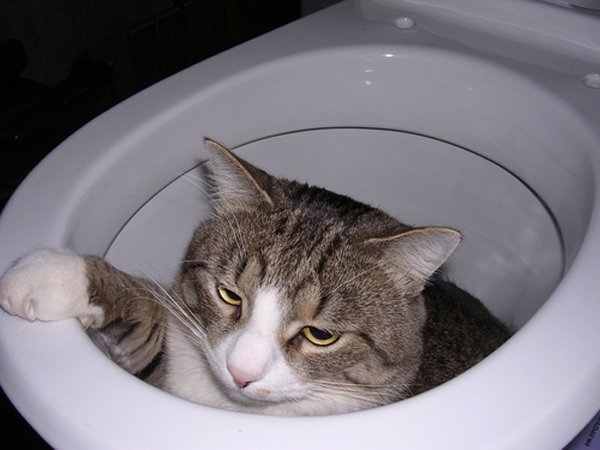The Dangers of Flushing Cat Poop Down Your Toilet - Advice for Safer Handling
The Dangers of Flushing Cat Poop Down Your Toilet - Advice for Safer Handling
Blog Article
The content following next pertaining to Don’t flush cat feces down the toilet is highly stimulating. Give it a go and draw your own personal final thoughts.

Introduction
As pet cat owners, it's important to be mindful of how we dispose of our feline good friends' waste. While it might appear practical to purge feline poop down the bathroom, this method can have harmful consequences for both the environment and human health.
Alternatives to Flushing
Thankfully, there are more secure and a lot more liable means to deal with feline poop. Take into consideration the following choices:
1. Scoop and Dispose in Trash
One of the most common technique of taking care of feline poop is to scoop it right into a naturally degradable bag and throw it in the trash. Be sure to utilize a devoted litter scoop and dispose of the waste promptly.
2. Use Biodegradable Litter
Select eco-friendly pet cat trash made from materials such as corn or wheat. These trashes are environmentally friendly and can be securely thrown away in the trash.
3. Hide in the Yard
If you have a backyard, consider hiding cat waste in a designated location far from veggie yards and water resources. Be sure to dig deep adequate to avoid contamination of groundwater.
4. Set Up a Pet Waste Disposal System
Purchase a family pet waste disposal system specifically made for cat waste. These systems make use of enzymes to break down the waste, lowering odor and environmental effect.
Wellness Risks
In addition to environmental problems, purging cat waste can additionally present health and wellness risks to people. Feline feces might include Toxoplasma gondii, a bloodsucker that can create toxoplasmosis-- a potentially extreme ailment, especially for pregnant ladies and individuals with weakened body immune systems.
Ecological Impact
Flushing cat poop presents hazardous pathogens and bloodsuckers into the water system, posing a substantial danger to marine ecosystems. These pollutants can negatively impact marine life and concession water high quality.
Verdict
Liable family pet possession extends beyond supplying food and sanctuary-- it also entails appropriate waste monitoring. By refraining from purging cat poop down the bathroom and going with different disposal approaches, we can decrease our ecological footprint and secure human wellness.
Why Can’t I Flush Cat Poop?
It Spreads a Parasite
Cats are frequently infected with a parasite called toxoplasma gondii. The parasite causes an infection called toxoplasmosis. It is usually harmless to cats. The parasite only uses cat poop as a host for its eggs. Otherwise, the cat’s immune system usually keeps the infection at low enough levels to maintain its own health. But it does not stop the develop of eggs. These eggs are tiny and surprisingly tough. They may survive for a year before they begin to grow. But that’s the problem.
Our wastewater system is not designed to deal with toxoplasmosis eggs. Instead, most eggs will flush from your toilet into sewers and wastewater management plants. After the sewage is treated for many other harmful things in it, it is typically released into local rivers, lakes, or oceans. Here, the toxoplasmosis eggs can find new hosts, including starfish, crabs, otters, and many other wildlife. For many, this is a significant risk to their health. Toxoplasmosis can also end up infecting water sources that are important for agriculture, which means our deer, pigs, and sheep can get infected too.
Is There Risk to Humans?
There can be a risk to human life from flushing cat poop down the toilet. If you do so, the parasites from your cat’s poop can end up in shellfish, game animals, or livestock. If this meat is then served raw or undercooked, the people who eat it can get sick.
In fact, according to the CDC, 40 million people in the United States are infected with toxoplasma gondii. They get it from exposure to infected seafood, or from some kind of cat poop contamination, like drinking from a stream that is contaminated or touching anything that has come into contact with cat poop. That includes just cleaning a cat litter box.
Most people who get infected with these parasites will not develop any symptoms. However, for pregnant women or for those with compromised immune systems, the parasite can cause severe health problems.
How to Handle Cat Poop
The best way to handle cat poop is actually to clean the box more often. The eggs that the parasite sheds will not become active until one to five days after the cat poops. That means that if you clean daily, you’re much less likely to come into direct contact with infectious eggs.
That said, always dispose of cat poop in the garbage and not down the toilet. Wash your hands before and after you clean the litter box, and bring the bag of poop right outside to your garbage bins.
https://trenchlesssolutionsusa.com/why-cant-i-flush-cat-poop/

I recently found that post on Don’t flush cat feces down the toilet when looking around the internet. Be sure to take the time to promote this blog entry if you appreciated it. We treasure reading our article about How to Dispose of Cat Poop and Litter Without Plastic Bags.
Visit Our Website Report this page